The role of nuclear hormone receptors in cutaneous wound repair
December 2014
in “Cell Biochemistry and Function”
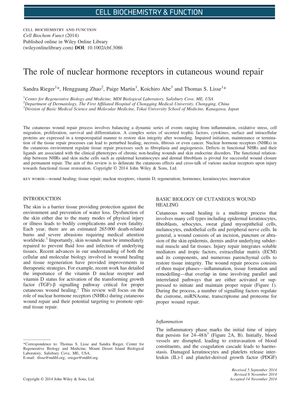
TLDR Nuclear hormone receptors play a significant role in skin wound healing and could lead to better treatment methods.
The document from December 22, 2014, reviews the role of nuclear hormone receptors (NHRs) in cutaneous wound repair, emphasizing their regulation of processes like fibroplasia and angiogenesis. It discusses the effects of estrogen, androgen, and retinoid receptors on wound healing, noting that estrogen enhances healing, androgens impair it, and retinoids have complex effects. The review also covers the roles of the vitamin D receptor (VDR) and peroxisome proliferator-activated receptors (PPARs), with VDR-null mice showing impaired healing and PPARs being essential for epidermal injury repair. Additionally, it mentions the potential negative impact of glucocorticoids and the need for further research on less-characterized NHRs like LXR and RORyt. The document concludes that a deeper understanding of NHRs could lead to improved therapies for tissue repair and related conditions. No conflicts of interest were declared, and the work was funded by the National Institute of General Medical Sciences and the US Department of Army.
View this study on europepmc.org →
Cited in this study
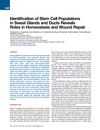
research Identification of Stem Cell Populations in Sweat Glands and Ducts Reveals Roles in Homeostasis and Wound Repair
The study found that sweat glands contain different types of stem cells that help with healing and maintaining healthy skin.
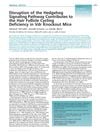
research Disruption of the hedgehog signaling pathway contributes to the hair follicle cycling deficiency in Vdr knockout mice
Mice without Vitamin D receptors have hair growth problems because of issues in the hedgehog signaling pathway.
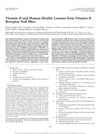
research Vitamin D and Human Health: Lessons from Vitamin D Receptor Null Mice
Mice without the vitamin D receptor have bone issues and other health problems, suggesting vitamin D is important for preventing various diseases in humans.
research An Extended Epidermal Response Heals Cutaneous Wounds in the Absence of a Hair Follicle Stem Cell Contribution
Skin can heal wounds without hair follicle stem cells, but it takes a bit longer.
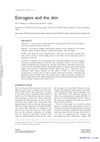
research Estrogens and the skin
Estrogen loss during menopause worsens skin health, but hormone replacement therapy may improve it, though more research is needed.
research Vitamin D receptor ablation alters skin architecture and homeostasis of dendritic epidermal T cells
Lack of Vitamin D receptor changes skin structure and increases certain immune cells in the skin.
research Androgen receptor–mediated inhibition of cutaneous wound healing
Blocking testosterone speeds up wound healing in males.
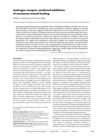
research Androgen receptor–mediated inhibition of cutaneous wound healing
Lowering testosterone speeds up wound healing in male mice.
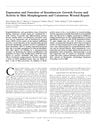
research Expression and Function of Keratinocyte Growth Factor and Activin in Skin Morphogenesis and Cutaneous Wound Repair
KGF and activin are crucial for skin healing and repair.